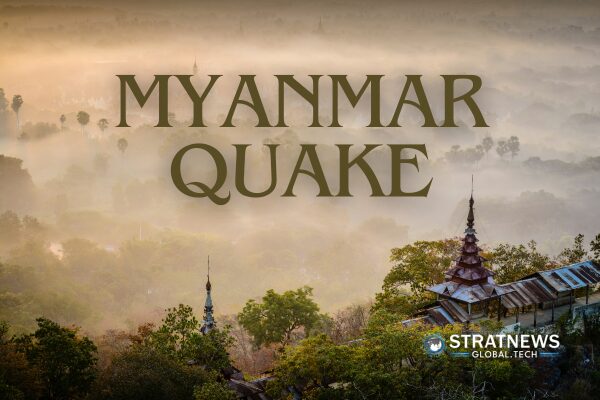Powerful Earthquake Strikes Myanmar, Causes Widespread Damage
A major earthquake with a magnitude of 7.7 struck Myanmar on 28 March 2025 at 06:20:54 UTC. The quake was followed by a strong aftershock measuring 6.4 on the Richter scale. The epicentre was located near the Sagaing-Mandalay border, at coordinates 22.013° N, 95.922° E, and at a shallow depth of 10 kilometres. The impact of the tremors was felt across much of Myanmar and extended into neighbouring countries.
Mandalay, Myanmar’s second-largest city, bore the brunt of the earthquake. The city experienced severe infrastructure damage, with roads, buildings, and essential services affected. The capital, Naypyidaw, also reported tremors, though the damage there was comparatively less severe. In northern Thailand, particularly in Chiang Mai, residents reported shaking and minor structural damage.
Tectonic Setting Behind the Quake
Myanmar lies along the convergent boundary between the Indian and Eurasian tectonic plates. The Indian Plate moves northward at a rate of approximately 5 centimetres per year. This movement creates significant geological pressure and contributes to earthquake activity in the region.
Additionally, Myanmar is intersected by several smaller fault zones, the most notable being the Sagaing Fault. This active strike-slip fault runs through central Myanmar and is responsible for accommodating the lateral motion between the Indian and Eurasian plates. The recent earthquake is believed to have been caused by a release of accumulated stress along this fault line or its associated structures.
Satellite Imagery Reveals Major Damage
A rapid damage assessment using Cartosat-3 satellite imagery was conducted by ISRO. The post-event data from 29 March 2025 was compared with pre-event images captured on 18 March 2025. The analysis showed significant destruction in Mandalay and Sagaing cities.
In Mandalay, landmarks such as Sky Villa, Phayani Pagoda, Mahamuni Pagoda, and Ananda Pagoda suffered extensive damage. The University of Mandalay and several public buildings were also impacted, with many structures either partially or completely collapsed.
In Sagaing, the Ma Shi Khana Pagoda and several monasteries showed visible damage. One of the most notable losses was the complete collapse of the historic Ava (InnWa) Bridge over the Irrawaddy River. Satellite images also revealed cracks and ruptures across floodplains, along with signs of liquefaction, particularly near the riverbanks.
These findings are based on rapid satellite data analysis and will require verification through ground surveys.
Before and after images of few selected damage sites can be viewed here.


